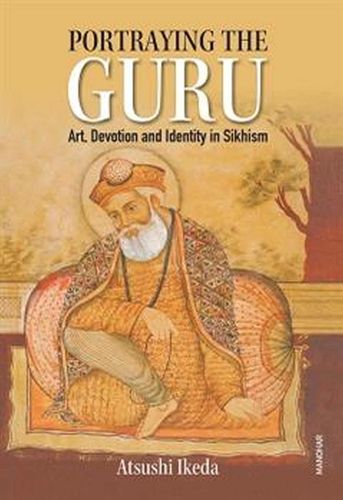Readings Newsletter
Become a Readings Member to make your shopping experience even easier.
Sign in or sign up for free!
You’re not far away from qualifying for FREE standard shipping within Australia
You’ve qualified for FREE standard shipping within Australia
The cart is loading…






The study breaks a fresh ground in the study of Sikh art after the pione-ering contributions of W.H. McLeod and B.N. Goswamy in the similar field. The book on Sikh art evolution is centred on portraits of Sikh Gurus from the eighteenth to the twentieth century. It examines around two hundred and fifty texts of art, available in different mediums, scattered across museums and private collections in different countries. It goes to the credit of the scholar for pointing out how Guru Nanak's portraiture catered to the spiritual and cultural needs not only of ordinary Sikhs but also satisfied the expectations of the newly formed urban middle class. The scholar critically reviews Harjot Oberoi's study and emphasizes the significant role of Sikh art in the formation of a distinct Sikh community's identity. The author took note of how the Singh Sabha Move-ment (1873-1909) and the Akali Movement of 1920 onwards, popularized devotional portraits of Guru Nanak even though idolatry is forbidden in the sacred text Guru Granth Sahib. It underlines how there was a paradigm shift in the mentality of Sikh society under the colonial impact of the British Raj.
$9.00 standard shipping within Australia
FREE standard shipping within Australia for orders over $100.00
Express & International shipping calculated at checkout
The study breaks a fresh ground in the study of Sikh art after the pione-ering contributions of W.H. McLeod and B.N. Goswamy in the similar field. The book on Sikh art evolution is centred on portraits of Sikh Gurus from the eighteenth to the twentieth century. It examines around two hundred and fifty texts of art, available in different mediums, scattered across museums and private collections in different countries. It goes to the credit of the scholar for pointing out how Guru Nanak's portraiture catered to the spiritual and cultural needs not only of ordinary Sikhs but also satisfied the expectations of the newly formed urban middle class. The scholar critically reviews Harjot Oberoi's study and emphasizes the significant role of Sikh art in the formation of a distinct Sikh community's identity. The author took note of how the Singh Sabha Move-ment (1873-1909) and the Akali Movement of 1920 onwards, popularized devotional portraits of Guru Nanak even though idolatry is forbidden in the sacred text Guru Granth Sahib. It underlines how there was a paradigm shift in the mentality of Sikh society under the colonial impact of the British Raj.